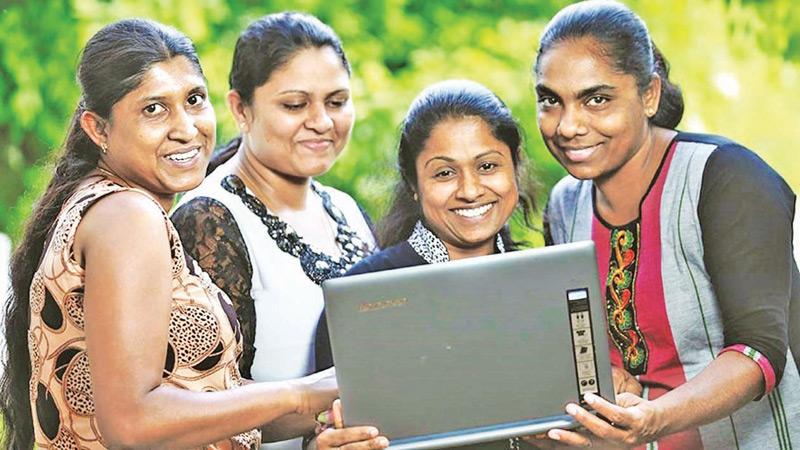
I sometimes wonder whether Sri Lankans are living in the 21st century. You might agree if you take a good look at the women living in non-urban areas who are still regarded as synonymous with ‘domesticity’. Of course, there has been significant emancipation of women in our part of the world. But there still exists a powerful school of thought emphasising the prime duty of a woman as motherhood and marital/household obligations. They believe career and family are two contradictory terms as far as women are concerned.
The same elders charge that those women who are career oriented and who would want to control their reproductive power are anti-social. They are looked down upon for whom money, career and power are the only measures of success. I wonder if such a labelling would ever be done on their male counterparts.
Lord Denning is regarded as a most celebrated English judge of the 20th century. He was also an author and one of his books is titled, “Due Process of Law.” In this book he says: “A woman in her sphere does work as useful as a man in his. She has as much right to her freedom, to develop her personality to the full as a man. When she marries, she does not become the husband’s servant but his equal partner. If his work is more important in the life of the community, hers is more important in the life of the family. Neither can do without the other. Neither is above the other or under the other. They are equals.”
Lord Denning did a marvellous job by playing the role of ‘essential equaliser’ in a pluralist and patriarchal society. His writings are accepted globally as a pacesetter for women emancipation.
No doubt, it is extremely important to prove the equal worth of a stay-at-home-mother’s work which she performs within the framework of the household, including giving birth to and rearing children when compared with the work of her male counterpart. But it is also the easier argument.
But this argument of ‘equality’ advances with a presumption that the ‘home’ belongs exclusively to the female and the ‘world’ is the exclusive dominion of the male. The real argument should be in terms of gender ‘equity’ and not just ‘equality’.
Difference
Gender equity is the process of allocating resources, programs and decision-making fairly to both males and females. This requires ensuring that everyone has access to a full range of opportunities to achieve the social, psychological and physical benefits that come from participating in sport and physical activity.
Gender equity requires that girls and women be provided with a full range of activity and program choices that meet their needs, interests and experiences.
Therefore, some activities may be the same as those offered to boys and men, some may be altered, and some may be altogether different. Global human rights legislation has affirmed the principles of equity while making provisions for affirmative action programs to eliminate disadvantage.
In contrast to equity, gender equality is the process of allocating resources, programs and decision making so that males and females have the same.
While the goal of treating everyone the same may seem noble, the principle of equal treatment tends to ignore the fact that people differ in their capacities, interests, resources and experiences. Equality focuses on creating the same starting line for everyone. Equity has the goal of providing everyone with the full range of opportunities and benefits – the same finishing line.
Sharing
Gender equity would demand the dilution of the ‘public’ and ‘private’ divide. But the actual problem lies with the fact that, while women have started occupying their place in the traditional sphere of male dominion and are trying to adapt to the demands and responsibilities of the surroundings, a similar transition has not taken place as far as men are concerned.
Men are still reluctant to fill the space in the home left by their working counterparts. Women have to either take up the dual responsibility or have to give up one for the other. Societal grooming over the years has been such that women feel proud to do away with their dreams, aspirations and ambitions on this sacrificial altar.
Disadvantaged lot
Sri Lankan politicians talk highly about the achievement of gender neutrality. However, if scratched on the surface it would reveal a blatant disadvantage for the weaker sex. For gender equity to be instituted, we have to see through insular patriarchal mindsets and values and that men and women share equal responsibility of the home and the world.
Women in Sri Lanka form approximately 57% of a total estimated population of 21 million, based on the ADB Report – Country Gender Assessment (Sri Lanka).
However, according to the Department of Census and Statistics bulletin on labour force, employment and unemployment statistics for the first quarter in 2018, of the total economically active population of 8.5 million persons, only 33.4% are women. Thus, almost 70% of the labour force constitutes economically inactive women. This is in spite of free education, which means both girls and boys have equal access to education.
We need more women in the workforce if we are to reduce poverty, energize national markets, and reduce inequalities. That is why there is still a long road ahead and a great potential to unleash.
To accelerate the process toward gender equity, it is necessary to focus on the economic empowerment of women, so priority must be given to their access to vocational education, financial and digital services, as well as ensure greater legal protection and reduction of non-remunerated work.
Programs need to be introduced to facilitate the incorporation of women in the local labour market, whether as entrepreneurs, managing their own businesses, or as employed workers.
This would increase their financial autonomy and improve the valuation of female work.
